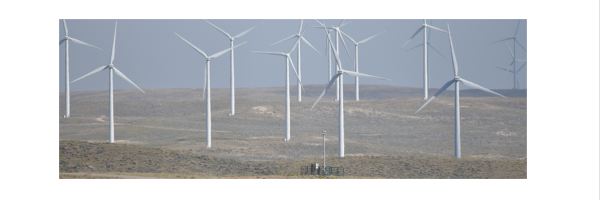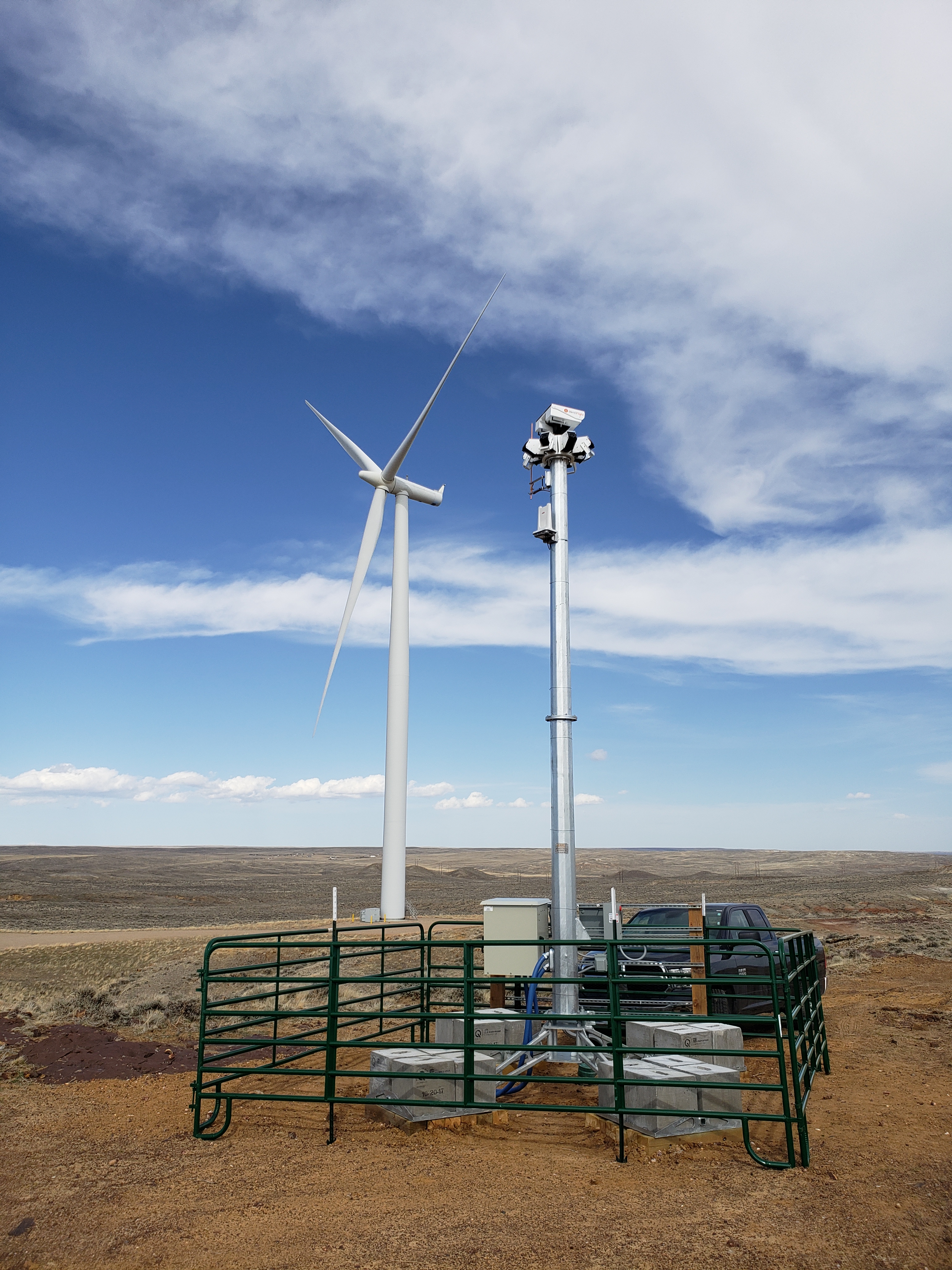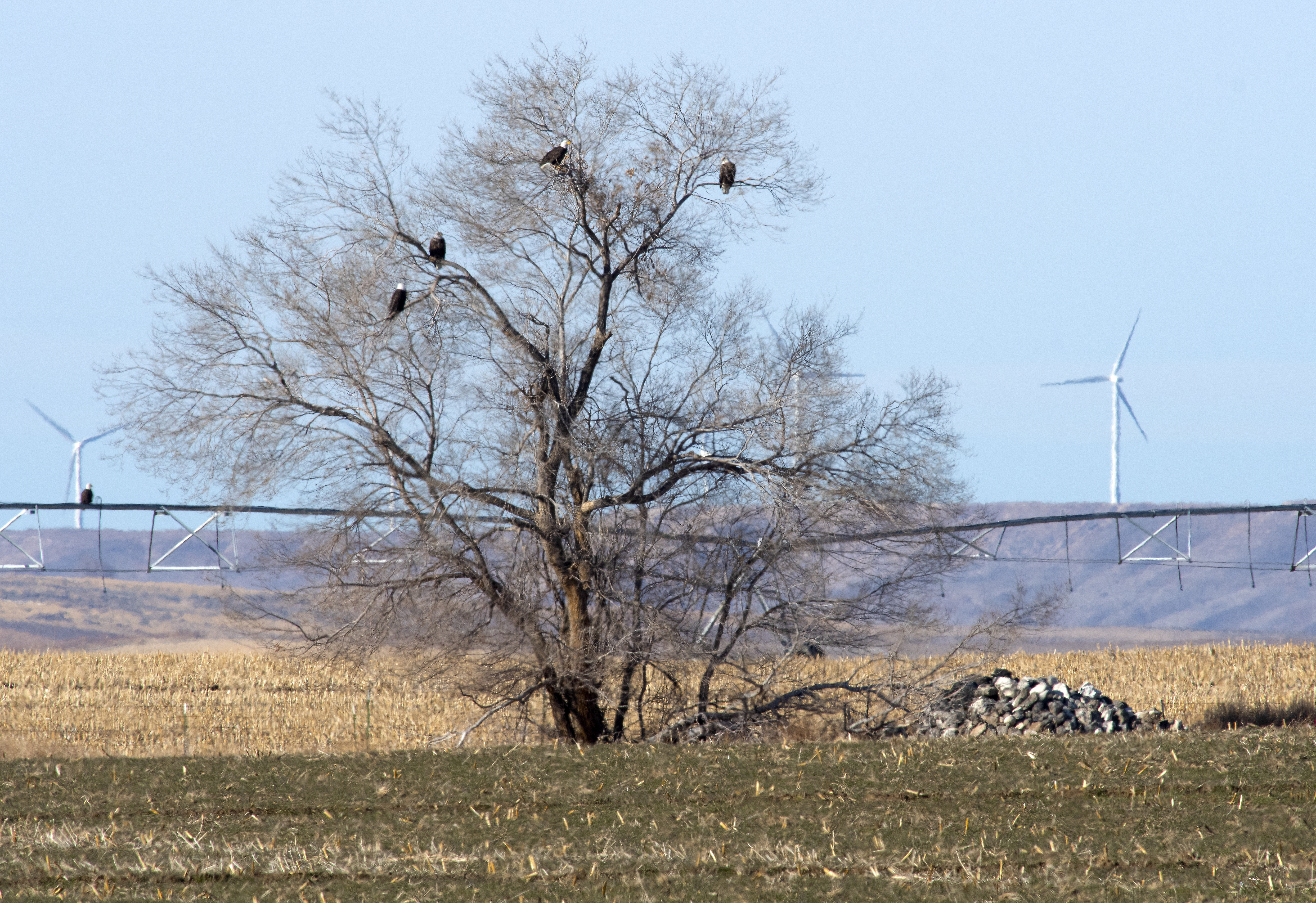IdentiFlight
Wind energy is an important technology as society moves toward identifying green sources of energy. However, wind turbines can cause a negative impact on local wildlife, including bird and bat fatalities, which occur when they collide with rotating turbine blades. In a recently released study, “Eagle fatalities are reduced by automated curtailment of wind turbines,” in the Journal of Applied Ecology, researchers from The Peregrine Fund, Western EcoSystems Technology, Inc., and the U.S. Geological Survey, tested an automated computer vision system called IdentiFlight. This system is designed to use cameras and machine learning to detect eagles near turbines, so turbines can be shut off, reducing fatalities of eagles at wind energy sites. Use of the new IdentiFlight system resulted in an 82% reduction of eagle fatalities.
IdentiFlight is an automated curtailment system consisting of cameras and software programmed for detecting flying objects, classifying them, and stopping turbines from spinning when an eagle is at threat of collision. The study to test IdentiFlight was performed at Duke Energy Renewables’ Top of the World Windpower facility in Wyoming, USA and included before and after studies as well as control and treatment sites. The research determined that the number of fatalities at the treatment site declined by 63% between the before and after periods of testing IdentiFlight while fatality numbers increased at the control site by 113%. These estimates are corrected for seasonal and site-specific variation in rates of detection of eagle carcass and rates of removal of carcasses by scavengers.
Dr. Chris McClure, Director of Global Conservation Science at The Peregrine Fund and lead author on this study, concludes, “These results show that using the IdentiFlight system can lessen numbers of fatalities of eagles at wind energy facilities, reducing the conflict between wind energy and raptor conservation.”
Dr. Todd Katzner of the U.S. Geological Survey adds, “It is important to note that while this technology significantly reduced eagle collisions, it did not completely eliminate them. Next steps could include partnering this technology with other mitigation actions, such as avoiding construction of turbines in high-risk areas for wildlife conflict.”
“IdentiFlight was excited to see independent verification that our technology protects wildlife and supports power production from renewable sources,” said Carlos Jorquera, chief technology officer for IdentiFlight. “One of the advantages of the IdentiFlight system is its ability to learn from the massive amounts of data that it collects daily from eagles and other protected bird species around the world. By leveraging artificial intelligence technologies such as machine-learning and convolutional neural networks, the system continuously improves as the data set grows. We are very excited and confident for IdentiFlight to continue to demonstrate dramatic improvements in its efficacy as we enter the new year.”
“Based on our early evaluation of the IdentiFlight technology, anecdotally we were convinced that it would greatly reduce eagle fatalities at our Top of the World Windpower project in Wyoming. This independent research confirms our earlier predictions and shows how the technology can effectively perform over an extended period of time,” said Tim Hayes, environmental director with Duke Energy Renewables. “It is our mission to reduce impacts to wildlife while generating affordable, clean energy for the communities we serve. IdentiFlight is just one way we support the environment in which our renewable energy projects operate.”
Dr. McClure says, “As this technology continues to develop and improve, it has the potential to greatly impact raptor conservation around the globe. This is important because we know that more than half of the world’s raptors have declining global populations, and energy infrastructure continues to grow at a rapid rate in places like sub-Saharan Africa where the majority of Endangered and Critically Endangered Vultures are at high risk of collision.”










